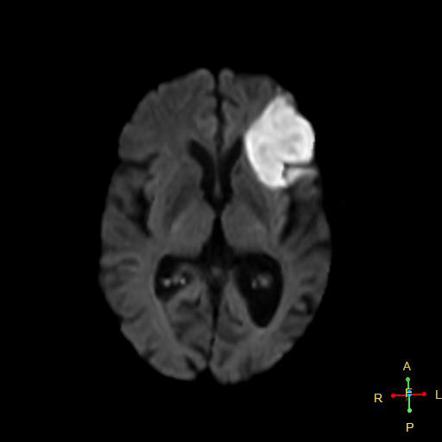Broca’s area
Contents
- 1 Broca’s area is present in –
- 2 Broca’s area is represented in Brodmann’s cytoarchitectonic map as –
- 3 Broca area originates from the embryonic –
- 4 Which artery most commonly supplies the Broca area?
- 5 Which artery serves as a collateral artery providing double blood supply to the Broca’s area in some cases?
- 6 Language comprehension is primarily a function of –
- 7 Brodmann area 44 receive more afferent connections from –
- 8 Which part of Brocca’s area is responsible for Semantic tasks?
- 9 Which part of Brocca’s area is responsible for Phonological tasks?
- 10 ALL of the following are other names of Wernicke’s aphasia EXCEPT –
- 11 ALL of the following types of aphasia Fluency of speech maintained EXCEPT –
- 12 In-Shorts
- 13 What is expressive aphasia?
- 14 What is “telegraphic speech”?
Broca’s area is present in –
A. Frontal lobe of the dominant hemisphere
B. Parietal lobe of the Non-dominant hemisphere
C. Frontal lobe of the Non-dominant hemisphere
D. Parietal lobe of the dominant hemisphere
Broca’s area is represented in Brodmann’s cytoarchitectonic map as –
A. Brodmann area 22
B. Brodmann area 44
C. Brodmann area 33
D. Brodmann area 46
Broca area originates from the embryonic –
A. Ectoderm
B. Endoderm
C. Mesoderm
D. Ectoderm and Mesoderm
Which artery most commonly supplies the Broca area?
A. Left anterior cerebral artery
B. Right anterior cerebral artery
C. Left middle cerebral artery
D. Right middle cerebral artery
Which artery serves as a collateral artery providing double blood supply to the Broca’s area in some cases?
A. Callosomarginal artery
B. Right anterior cerebral artery
C. Anterior communicating arteries
D. Short circumferential arteries
Language comprehension is primarily a function of –
A. Broca’s area
B. Wernicke’s area
C. Hippocampas
D. Amygdala
Brodmann area 44 receive more afferent connections from –
A. Prefrontal cortex
B. Superior temporal gyrus
C. Superior temporal sulcus
D. Inferior parietal regions
Which part of Brocca’s area is responsible for Semantic tasks?
A. Anterior part of Broca’s area
B. Posterior part of Broca’s area
C. Superior part of Broca’s area
D. Inferior part of Broca’s area
Which part of Brocca’s area is responsible for Phonological tasks?
A. Anterior part of Broca’s area
B. Posterior part of Broca’s area
C. Superior part of Broca’s area
D. Inferior part of Broca’s area
ALL of the following are other names of Wernicke’s aphasia EXCEPT –
A. Receptive aphasia
B. Posterior aphasia
C. Sensory aphasia
D. Conduction aphasia
ALL of the following types of aphasia Fluency of speech maintained EXCEPT –
A. Receptive aphasia
B. Expressive aphasia
C. Transcortical sensory aphasia
D. Conduction aphasia
In-Shorts
| Speech | Fluent | Non-fluent |
| 1 | Anomic aphasia | Expressive aphasia |
| 2 | Receptive aphasia | Mixed transcortical aphasia |
| 3 | Conduction aphasia | Transcortical motor aphasia |
| 4 | Transcortical sensory aphasia | Global aphasia |
What is expressive aphasia?
Broca’s aphasia. Also known as expressive aphasia,
Non-fluent aphasia
Characterized by partially losing the ability to produce spoken and written language.
Speech will still contain important content, but they may omit articles, prepositions
What is “telegraphic speech”?
Broca’s aphasia – patients exhibit.
Their speech will still contain important content, but they may omit articles, prepositions, and other words that only have grammatical significance. Thus, they are said to have “telegraphic speech.”
Infarction Involving Broca’s area – Radiopedia






